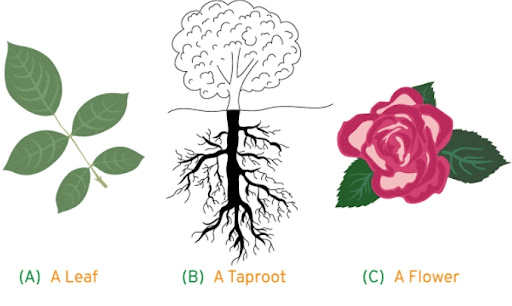Solved NCERT Questions For Class 6 Science Chapter 7 In Hindi - Free PDF
FAQs on NCERT Solutions For Class 6 Science Chapter 7 Getting To Know Plants in Hindi - 2025-26
1. How do the NCERT Solutions for Class 6 Science Chapter 7 explain the main functions of a stem?
The NCERT Solutions for Class 6 Science Chapter 7 detail the functions of a stem with a clear, step-by-step approach. They explain that a stem's primary roles are:
- Support: It holds the plant upright, allowing leaves, flowers, and fruits to be properly positioned.
- Conduction: It acts as a transport system, carrying water and minerals from the roots to the leaves and other parts.
- Food Transport: It distributes the food prepared by the leaves during photosynthesis to all parts of the plant, including the roots.
- Food Storage: In some plants, like potatoes and ginger, the stem is modified to store food.
2. What is the correct method to differentiate between herbs, shrubs, and trees as per the NCERT textbook?
The NCERT solutions guide students to classify plants based on the characteristics of their stems. The correct method involves observing these features:
- Herbs are identified by their green and tender stems. They are usually short and may not have many branches.
- Shrubs have hard but not very thick stems. Their branches arise from the base of the stem, giving them a bushy appearance.
- Trees are identified by their very tall, hard, and thick brown stems, known as the trunk. Branches typically appear on the upper part of the stem, much above the ground.
3. How do the NCERT Solutions explain the two main types of root systems in plants?
The NCERT Solutions for Chapter 7 explain the two root systems by focusing on their structure. To answer a question on this correctly, you should describe them as follows:
- Taproot System: This system has a main, central root called the taproot, from which smaller, lateral roots grow. It is typically found in plants with reticulate venation in their leaves, like mango or carrot.
- Fibrous Root System: This system consists of a cluster of thin, moderately branching roots that grow from the base of the stem. There is no main root. It is characteristic of plants with parallel venation, such as wheat and grass.
4. What are the key parts of a flower and their functions, as detailed in the NCERT solutions for Chapter 7?
The NCERT solutions for this chapter break down the flower into four main whorls. To solve questions correctly as per the CBSE 2025-26 syllabus, you should list each part and its function:
- Sepals: The green, leaf-like parts at the base of the flower that protect the bud.
- Petals: The brightly coloured parts that attract insects for pollination.
- Stamen: The male reproductive part, consisting of the anther (produces pollen grains) and the filament (the stalk).
- Pistil: The female reproductive part, located in the centre of the flower. It consists of the stigma, style, and ovary, which contains ovules.
5. How does the type of root system in a plant give a clue about its leaf venation, according to the observations in Chapter 7?
The NCERT exercises guide students to observe a fascinating connection: plants with a taproot system almost always have leaves with reticulate venation (a net-like pattern). Conversely, plants with a fibrous root system typically have leaves with parallel venation (veins run parallel to each other). Understanding this correlation is a key problem-solving takeaway from the chapter that helps in classifying unknown plants based on limited information.
6. Why is the step-by-step process of demonstrating transpiration, as shown in the NCERT textbook, important for understanding a plant's complete water cycle?
The activity of tying a plastic bag around a leafy branch demonstrates transpiration, the process of water loss from leaves. This is a crucial concept in the NCERT solutions because it explains two things:
- It creates a suction pull that helps the stem draw more water and minerals up from the roots, ensuring a continuous supply for photosynthesis.
- It helps in cooling the plant surface. Solving this activity-based question shows how roots, stem, and leaves work together as an interconnected system for water transport.
7. Beyond simple support, how do NCERT solutions clarify the stem's critical role as a 'two-way street' for transport in a plant?
The NCERT solutions for Class 6 Science clarify that the stem is more than just a pillar. It acts as a complex 'two-way street' for transport. The solution to the 'coloured water' experiment demonstrates the upward movement of water from roots to leaves. Simultaneously, the stem transports the food (sugars) produced during photosynthesis downwards from the leaves to nourish the roots and other non-photosynthetic parts. This dual-transport function is essential for the plant's survival and is a key concept to solve related questions.

























